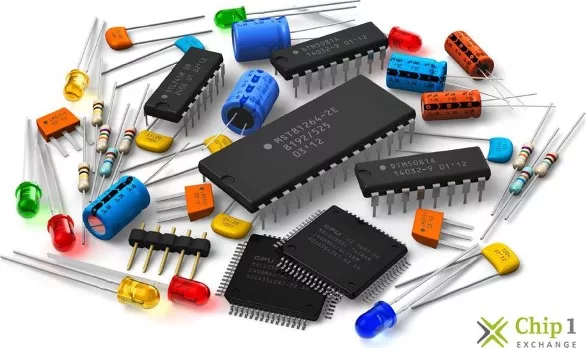Passive Components are used for power conversion, power stability, filtering, and configuring integrated circuits. All Passive Components have 2 characteristics that are common to them: Firstly, they do not need power sources. All Passive Components function without an external power source, neither they can be modified by it. Their influence is only the flow of power. Secondly, they do not generate power. Reactive Passive Components store unutilized power, while Resistive Passive Components dissipate power.
Types of Passive Components:
Resistors
The resistor, a passive component, blocks the flow of electrical current. The degree of current opposition, represented by the symbol R, is referred to as Resistance. It gauges how simple or complex a circuit path is for electrons to travel through. Ohms is the unit used to measure resistance.
Capacitors
Measured in Farads, capacitors are passive components that store electric energy. It has 2 conductive surfaces called electrodes which are split by a non-conductive insulator, dielectric.
Inductors
Inductors are passive components that dissipate current or electric surges by storing energy in an electro-magnetic field. It is mainly used for blocking, choking, filtering high frequency noise in electric circuits.
Frequently Asked Questions:
What are Passive Components?
Passive Components are used for power conversion, power stability, filtering, and configuring integrated circuits. They do not need power sources. All Passive
Components function without an external power source, neither can they be modified by it. Their influence is only the flow of power. Passive Components do not generate power. Reactive Passive Components store unutilized power, while Resistive Passive Components dissipate power.
What are the examples of Passive Components?
The main examples of Passive Components are Resistors, Capacitors, and Inductors.
What are the functions of Passive Components?
Passive components are used to control the flow of current in electronic and electrical circuits. Passive Components are energy acceptors. They cannot provide power gain. Passive Components do not function as semiconductor devices, as well.
What are the differences between Passive and Active Components?
active components, Passive Components are unable to produce electricity. They also do not require an external power source to operate. They are unable to provide power gain in any way. Passive Components store energy in the form of current or voltage, as opposed to Active Components that produce voltage or current.
Chipl Exchange offer wide array of Passive Electronic Component
Chip 1 Exchange is a franchised distributor specializing in the distribution of electronic components for medical, automotive, industrial, mobile computing, and aerospace applications. We want our consumers to have a one-stop shopping experience for everything from regular off-the-shelf electronic components to entire custom solutions.
The needs of its customers in the electronics and semiconductor industries are met by a large number of trustworthy partners at Chip 1. Companies like, Meritek Electronics Corporation, Kingtronic, Nemco, and many others are our partner suppliers and manufacturers for our customers’ passive component needs.
CHIP 1 EXCHANGE VALUES SHORTAGE
MANAGEMENT
Chip 1 Exchange has specialized teams that meet the needs of our clients for electronic components and semiconductor devices without interfering with their production flow. We offer our customers swift sourcing and logistical services with short lead times thanks to our offices all over the world. Customers that require out-of-date, unusable, or hard-to-find electronic components and semiconductors can also find them on Chip 1 Exchange.

